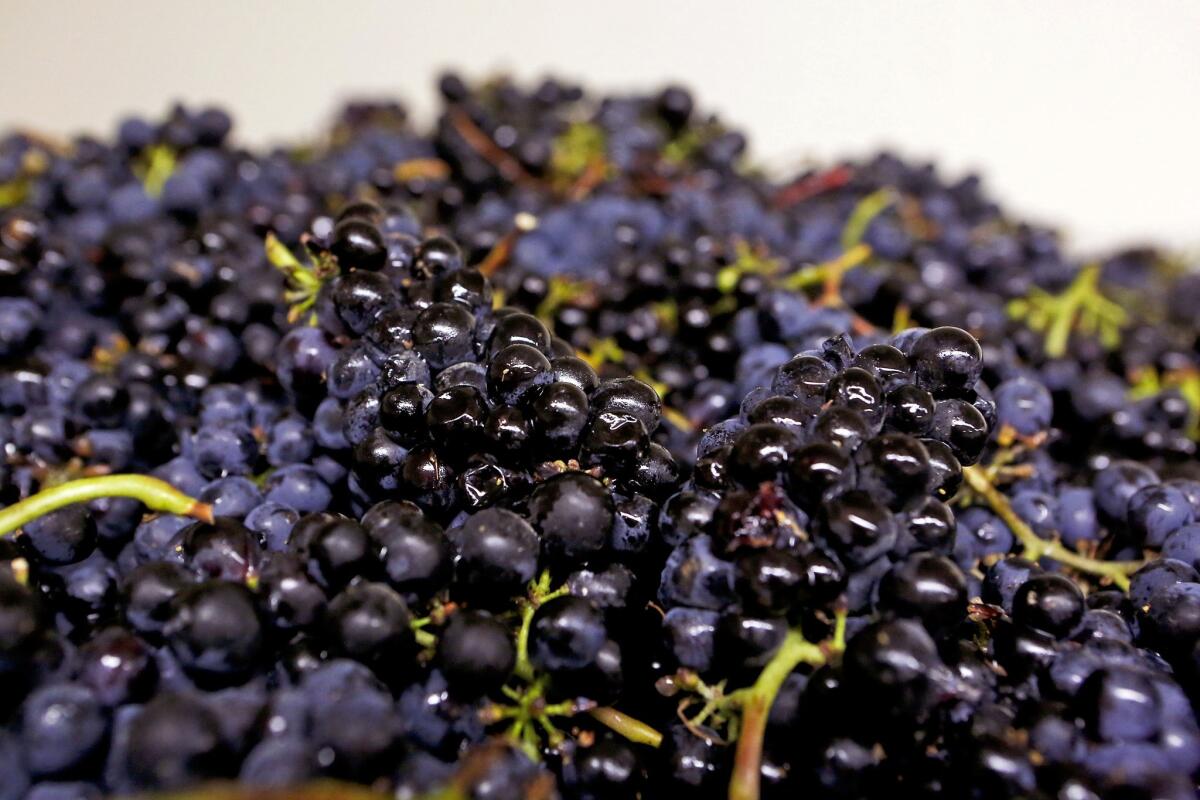Wine’s elements of change: soil, clones, stems and more

- Share via
Some of the elements that go into creating the tone or voice of the wine, according to Melville Vineyards winemaker Greg Brewer.
The soil: Sandier soils lead to Pinot Noirs that are more feminine, with high-toned aromatics and delicacy. Clay-based soils offer more power, richness and density.
Clonal selection: Different clones of Pinot Noir have different characters, like different instruments in the same family. Clone 115 could be a violin, clone 114 a viola, for example. But then there’s the variation introduced by growing that clone in different soils. Brewer would say that’s comparable to the difference in sound when a particular violinist plays the same theme on his or her particular instrument. It’s a matter of tone.
The ripeness: Grapes picked early in the harvest, generally speaking, are less ripe and more acidic, so offer energy, youthfulness, snap and verve as a brush stroke. Later-picked grapes offer more weight, more richness, more sensuality, more decadence.
Stem inclusion: The varying levels of stem inclusion contribute yet another cross-section of diversity. In pastry and desserts, the sweetness can be reined back by a savory element. And it’s the same thing with stem inclusion. It can rein in or mitigate the decadent nature of later-season fruit.
More to Read
Eat your way across L.A.
Get our weekly Tasting Notes newsletter for reviews, news and more.
You may occasionally receive promotional content from the Los Angeles Times.








